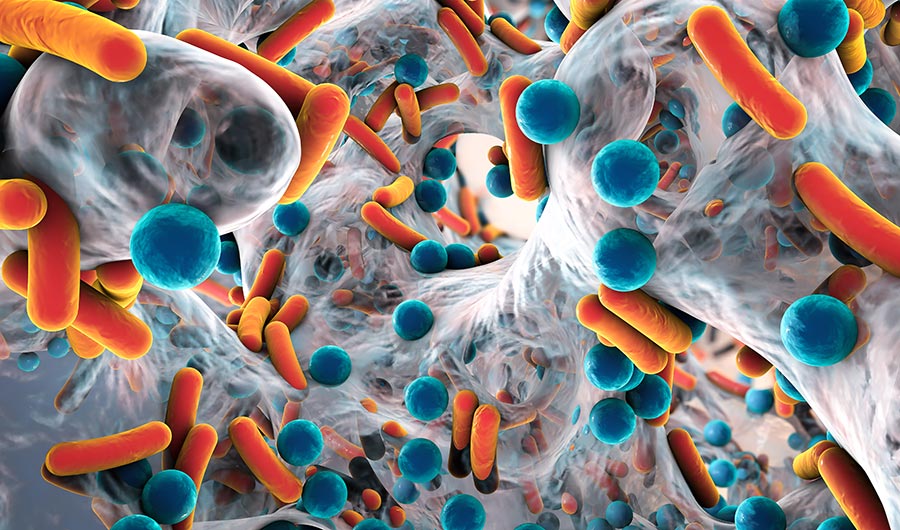Artificial Intelligence Identifies Potential New Antibiotics

A biiofilm of antibiotic resistant bacteria
Image credits: Kateryna Kon/Shutterstock
(Inside Science) -- Many dangerous bacteria are evolving resistance to our existing antibiotics faster than we can develop new ones. But now researchers have harnessed the power of artificial intelligence to dramatically speed up the search for new drugs -- and found a promising one on their first try.
James Collins, a biomedical engineer at the Massachusetts Institute of Technology, and his colleagues first trained a machine learning computer model on 2,500 known molecules -- 1,700 FDA-approved drugs and 800 natural compounds -- to teach it what kinds of traits could potentially kill bacteria. They then set it loose on a library of 6,000 chemical compounds and told it to identify compounds that didn’t look like any existing antibiotics but might instigate potential antibacterial activity.
“While there have been excellent efforts around finding new antibiotics, the great majority of these have led to discovering what we already had or, at best, analogues to existing classes,” said Collins. Finding drugs that work in different ways could help circumvent bacteria’s existing resistance mechanisms, or even highlight novel antibacterial approaches that are harder to develop resistance to.
And that effort appears to have paid off. The computer model predicted that a drug that had previously been tested as a treatment for diabetes would have strong antibacterial action. The researchers named the drug halicin after the AI system HAL 9000 in the film "2001: A Space Odyssey."
When they tested halicin in petri dishes and in mice, they found that it could quickly wipe out a range of dangerous bacteria, including many resistant ones, like Clostridium difficile and Mycobacterium tuberculosis, and Acinetobacter baumannii, a bacteria that has infected many U.S. soldiers in Iraq and Afghanistan.
Halicin appears to target aspects of the bacteria’s cell membrane, rather than the internal proteins or ribosomes that are the targets of most existing antibiotics. This might be what helps it evade resistance, and could mean that bacteria will be slower to develop resistance to it as well. E. coli exposed to halicin for 30 days did not become resistant, while the bacteria developed resistance to the antibiotic ciprofloxacin within just a few days.
The big advantage of using AI to search for new drugs is speed, said Collins. After finding halicin, they analyzed an even bigger library of more than 100 million molecules. They found a few hundred promising leads in just three days, tested 23 of them and found eight with good antibacterial properties. That would have taken years of work without the AI to help, and in fact would probably have been impossible, he said.
The researchers published their results this week in the journal Cell.

